Fire is a destructive force that can cause extensive damage to homes and businesses. Beyond the immediate impact of flames, there are various types of fire damage, each presenting unique challenges in the restoration process. In this blog post, we will delve into the diverse forms of fire damage and explore the restoration challenges associated with each.
1. Structural Damage:
Structural damage is the most apparent consequence of a fire. It encompasses harm to the building's foundation, walls, floors, and supporting structures. High-temperature exposure can weaken the integrity of materials, leading to potential collapse.
Restoration Challenges:
-
Structural Assessment: A thorough assessment is needed to determine the extent of damage and whether the structural integrity is compromised.
-
Material Replacement: Damaged materials might need to be replaced, requiring skilled labor and construction expertise.
-
Safety Concerns: Ensuring a safe environment for restoration professionals and occupants is a primary challenge, especially if there's a risk of structural collapse.
2. Smoke Damage:
Smoke damage extends far beyond the immediate vicinity of the fire. It involves the spread of smoke particles, soot, and toxic gasses throughout the structure.
Restoration Challenges:
-
Cleaning and Deodorizing: Removing soot and smoke residue from walls, ceilings, and possessions is a meticulous process that requires specialized cleaning techniques.
-
Air Quality: Restoring indoor air quality is essential, as lingering smoke particles can pose health risks.
-
Odor Elimination: Smoke leaves behind persistent odors that require advanced deodorization methods to completely eradicate.
3. Water Damage:
Water damage often occurs as a result of firefighting efforts. Water used to extinguish flames can saturate building materials, leading to mold growth and further structural issues.
Restoration Challenges:
-
Drying and Dehumidification: Efficient drying processes are critical to preventing mold growth and further structural damage.
-
Mold Remediation: Addressing potential mold issues requires specialized expertise and equipment.
-
Salvaging Possessions: Items affected by water must be quickly and effectively dried to minimize damage.
4. Heat Damage:
Intense heat can cause structural components to warp, melt, or lose their structural integrity.
Restoration Challenges:
-
Material Evaluation: Determining which materials can be salvaged and which need replacement is a challenge in the aftermath of intense heat exposure.
-
Structural Reinforcement: Structural elements may need reinforcement or replacement to restore stability.
-
Temperature Assessment: Ensuring that residual heat doesn't compromise restoration efforts or pose safety risks is crucial.
5. Electrical Damage:
Fires often damage electrical systems, posing risks of electrocution and further fire hazards.
Restoration Challenges:
-
Wiring Assessment: Thorough evaluation of electrical systems is required to identify damaged components.
-
Rewiring: Depending on the extent of damage, rewiring may be necessary, requiring specialized skills.
-
Safety Measures: Ensuring that restored electrical systems meet safety standards is paramount.
6. Content Damage:
Description:
Personal possessions, furniture, and other contents within a structure can suffer various types of damage, including charring, discoloration, and warping.
Restoration Challenges:
-
Inventory and Assessment: Cataloging and assessing the damage to personal belongings is a time-consuming but essential task.
-
Restoration Techniques: Different materials require specialized restoration techniques to minimize damage and salvage items.
-
Emotional Considerations: The restoration process involves dealing with emotionally charged belongings, requiring sensitivity and empathy.
7. Environmental Impact:
Description:
Fires can release hazardous substances into the environment, including asbestos, lead, and other toxins.
Restoration Challenges:
-
Environmental Assessment: Identifying and assessing environmental hazards is crucial for safe restoration.
-
Hazardous Material Removal: Safely removing and disposing of hazardous materials requires compliance with environmental regulations.
-
Health and Safety Measures: Implementing measures to protect the health of restoration professionals and occupants is a primary concern.
The aftermath of a fire is a complex landscape of challenges, each demanding a unique set of skills, expertise, and resources. Successful restoration requires a comprehensive approach that addresses structural, smoke, water, heat, electrical, and content damage, while also managing potential environmental hazards. Professional restoration services equipped with the latest technologies and industry knowledge play a vital role in mitigating the impact of fire damage.
Understanding the intricacies of different types of fire damage is the first step towards a thorough and effective restoration process. It's not just about rebuilding structures; it's about restoring lives and providing a sense of normalcy in the wake of a devastating event. As communities come together to recover from the ashes, the restoration industry plays a critical role in helping them rise again.
